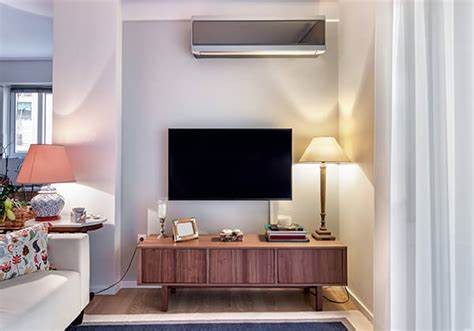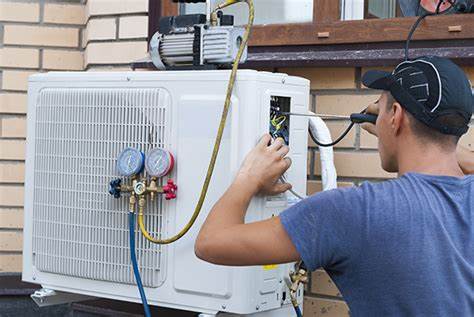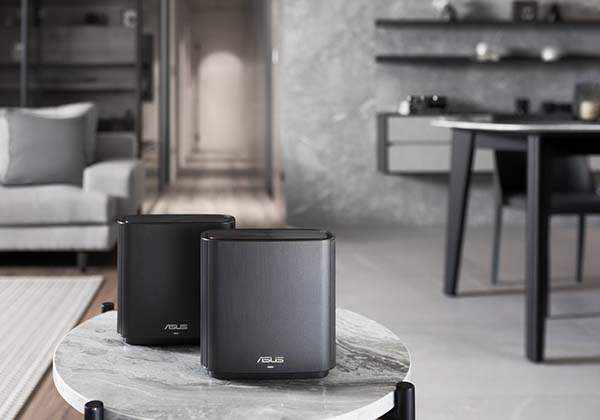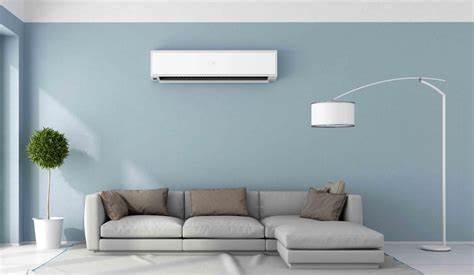Ductless air conditioners, often overshadowed by their more common counterparts like central air systems and window units, carve out their own niche with unparalleled efficiency and flexibility. This unique character sets them apart in the vast world of cooling solutions, offering a distinct experience that distinguishes ductless systems as a category in their own right. Key types of ductless air conditioners include Single-Zone and Multi-Zone systems, each known for their specific applications.
Single-Zone ductless systems excel in cooling individual rooms, while Multi-Zone systems can efficiently cool multiple areas of a home or office simultaneously. Going a bit deeper, each type of ductless air conditioner presents its own set of advantages, installation processes, energy efficiency levels, and recommendations for different living spaces. The following sections will explore these aspects in detail, providing a richer understanding of what makes ductless air conditioners a versatile and sought-after cooling solution worldwide.
What is a ductless air conditioner?

A ductless air conditioner, also widely recognized as a mini-split, distinguishes itself in the HVAC landscape through its capability to cool spaces without the necessity for extensive ductwork. This system is ingeniously split into two primary components: an indoor unit that efficiently releases cool air into the room, and an outdoor unit that expertly expels heat to the exterior. The allure of ductless ACs lies in their ease of installation, energy efficiency, and the unparalleled flexibility to cool specific areas or “zones” within a home or commercial building.
This innovative cooling solution is particularly advantageous for environments where traditional, ducted systems are either impractical or financially burdensome to install. By grasping these fundamental characteristics, individuals and businesses are better equipped to make enlightened decisions about integrating ductless air conditioning into their cooling strategies.
Why choose a ductless air conditioner?
Opting for a ductless air conditioner brings a host of advantages, positioning it as a superior choice for many scenarios. Key among these benefits is their energy efficiency, which significantly reduces energy wastage and can lead to notable savings on utility expenses. Another compelling reason is the minimal installation disruption; unlike traditional systems that require extensive ductwork, ductless ACs need only a small hole for the conduit, making the installation process quicker and less invasive.
This characteristic renders ductless systems ideal for older homes or any structures lacking existing ductwork, where maintaining the building’s integrity is crucial. Additionally, the ability to cool or heat specific “zones” within a property allows for tailored comfort and further enhances energy efficiency. These points underscore why ductless air conditioners are an appealing solution for those in search of an efficient, flexible, and minimally disruptive cooling option.
Energy efficiency
Ductless air conditioners excel in energy efficiency, consuming less electricity to cool rooms effectively. This efficiency is due to their targeted cooling approach, which minimizes energy waste and can significantly reduce utility bills.
Minimal installation disruption
Installing a ductless AC system involves minimal disruption, needing only a small hole for the conduit connection. This streamlined installation process avoids the extensive modifications required for traditional ducted systems, making it a cleaner and quicker option.
Ideal for non-ducted homes
For buildings lacking existing ductwork, ductless air conditioners present an optimal solution. They bypass the need for expensive and intrusive duct installation projects, making them perfect for older homes, historic properties, or any space where maintaining architectural integrity is a priority.
How does a ductless air conditioner operate?
A ductless air conditioner functions through a coordinated mechanism between its indoor and outdoor units. The indoor unit, strategically mounted on the wall, takes in warm air from the room and directs it over coils containing refrigerant. This action cools the air by removing its heat, which is then transferred to the refrigerant.
The now-heated refrigerant is moved to the outdoor AC unit, where the absorbed heat is released outside. Subsequently, the cooled air is recirculated into the room, achieving the desired temperature. This efficient cooling cycle, propelled by the continuous flow of refrigerant between the indoor and outdoor components, provides effective temperature control without relying on traditional ductwork.
Indoor unit captures warm air
The indoor unit serves as the starting point, where it efficiently captures warm air present in the room. This air is then directed over coils containing refrigerant, which plays a pivotal role in cooling the air by absorbing the heat.
Outdoor unit expels heat
Following the heat absorption, the now-warm refrigerant is pumped to the outdoor unit. It’s here that the heat, carried by the refrigerant from the indoor air, is expelled into the outdoor environment, facilitating the cooling process.
Refrigerant circulates between units
At the heart of the system’s functionality is the circulation of refrigerant between the indoor and outdoor units. This continuous flow is crucial, as it transports heat out of the interiors, ensuring the space remains cool and comfortable.
Key components of a ductless AC system

A ductless AC system relies on several integral components that collaborate to ensure efficient and effective cooling. Central to its operation is the compressor, situated in the outdoor unit, which is crucial for compressing the refrigerant and driving its circulation between the indoor and outdoor units. Within the confines of the space being cooled, air handlers are installed.
These units are tasked with distributing the cooled air throughout various rooms or zones, ensuring a consistent temperature across different areas. Control and customization of the system are made effortless through the use of a remote control, which allows users to easily adjust settings and temperatures to their preference. Together, these components form the backbone of the ductless AC system, enabling it to provide superior cooling performance while maintaining high levels of energy efficiency.
Compressor compresses refrigerant
The compressor serves as the heart of the ductless AC system, efficiently compressing the refrigerant. This action elevates the refrigerant’s pressure and temperature, facilitating its seamless flow through the system and ensuring effective cooling.
Air handlers distribute cooled air
Within the system, air handlers are strategically placed to distribute the cooled air evenly across the designated spaces. These units, integral to the indoor component, work diligently to maintain a consistent and comfortable temperature throughout various rooms or zones.
Remote control adjusts settings

A remote control offers users the ultimate convenience in managing their ductless AC system. Through simple button presses, individuals can effortlessly adjust temperature settings, switch between modes, and tailor the cooling experience to their specific comfort needs.
Also, read about wifi air conditioners and how they are transforming the way we interact with our home cooling systems.
Installation requirements for ductless AC
The successful installation of a ductless AC system hinges on meeting several critical requirements. Initially, it’s essential to ensure there is sufficient mounting space on an interior wall for the indoor unit, which facilitates optimal air flow and easy access for maintenance. Equally important is access to electricity, as both the indoor and outdoor units require a reliable power source to function effectively.
Lastly, careful outdoor unit placement is paramount; it should be positioned close enough to the indoor unit for efficient operation, yet in a spot that’s free from obstructions to allow for proper heat dissipation. Adhering to these requirements is key to a seamless installation process and the long-term efficiency of the ductless AC system.
Mounting space on interior wall
Securing mounting space on an interior wall is a foundational step for installing the indoor unit of a ductless AC system. It’s imperative to choose a location that not only accommodates the unit’s dimensions but also promotes efficient air distribution and ease of maintenance.
Access to electricity
Ensuring access to electricity is vital for the operational integrity of both the indoor and outdoor units of a ductless AC system. Proper electrical access must be planned for each unit, underscoring the need for strategic installation planning to meet power requirements.
Outdoor unit placement considerations
Thoughtful placement of the outdoor unit is key to optimizing the performance of a ductless AC system. It should be situated in a spot that supports unimpeded air exchange and effective heat expulsion, while also maintaining the necessary proximity to the indoor unit for optimal refrigerant flow.
Maintaining a ductless air conditioner

Proper maintenance is key to maximizing the lifespan and efficiency of a ductless air conditioner. Regular upkeep includes cleaning the filters monthly, a simple yet effective way to ensure optimal airflow and prevent efficiency losses due to dust and debris accumulation. Additionally, scheduling an annual professional inspection is crucial for identifying and addressing any potential issues before they escalate, ensuring the system continues to operate smoothly.
It’s also vital to keep the outdoor unit area clear of any obstructions, facilitating efficient heat dissipation and preventing system strain. Adhering to these maintenance steps helps guarantee that your ductless AC system remains a reliable source of comfort throughout its service life.
Clean filters monthly
Regularly cleaning the filters monthly stands as a critical maintenance step for ductless air conditioners. This straightforward yet impactful procedure ensures sustained airflow efficiency and guards against the accumulation of dust and debris, which can negatively affect system performance.
Annual professional inspection
An annual professional inspection is indispensable for maintaining the operational integrity of a ductless AC system. It provides an opportunity for specialists to detect and address any emerging issues, securing optimal functionality and preventing future complications.
Clear outdoor unit area
Ensuring the outdoor unit area is clear of obstructions plays a vital role in the system’s overall health. This maintenance task facilitates effective heat expulsion, crucial for preventing system strain and enhancing the unit’s durability and efficiency.
Potential drawbacks of ductless AC
While ductless air conditioners are celebrated for their efficiency and versatility, they are not without their potential drawbacks. A primary concern for many is the higher upfront cost when compared to more conventional window units, which may pose a barrier for some potential users. Additionally, the aesthetic impact of the indoor units, which are mounted on walls and visible within the living space, might not align with every interior design preference, posing a challenge for seamless integration into home decor.
Furthermore, these systems are not typically suitable as a primary heat source in regions that experience extremely cold temperatures, somewhat limiting their applicability in colder climates. Prospective buyers should consider these aspects alongside the benefits to make an informed decision that best suits their needs.
Higher upfront cost than window units
The higher upfront cost of ductless air conditioners, when compared to traditional window units, stands out as a significant factor for those considering their cooling options. This initial expense may influence the decision-making process, particularly for individuals prioritizing budget constraints.
May not blend with all decor
A notable consideration for homeowners is the potential for ductless AC systems to clash with certain interior designs. The indoor units, while sleek, are visible and may not blend seamlessly with all types of decor, posing a challenge for those with specific aesthetic preferences.
Not suitable as primary heat source in extreme cold
For regions that endure very cold winters, ductless air conditioners are not recommended as the sole source of heat. Their heating capability, while beneficial in milder climates, falls short in extreme cold, limiting their applicability as a comprehensive heating solution in colder environments.
Selecting the right ductless AC

Selecting the ideal ductless air conditioner requires a thoughtful evaluation of specific factors to ensure it perfectly aligns with your cooling needs. Key to this process is assessing the room size and layout, as this will influence the system’s capacity and configuration for maximum efficiency. Understanding the BTU (British Thermal Unit) requirements of your space is critical, as it helps in choosing a unit that can cool effectively without overextending energy use or falling short on performance.
Furthermore, deciding between a multi-zone or single-zone unit is essential for those looking to customize cooling across different areas within a property. By carefully considering these aspects, you can pinpoint a ductless AC system that offers efficient and tailored comfort for your living or working environment.
Assessing room size and layout
Evaluating the room size and layout is critical when choosing a ductless AC system. This step ensures the selected unit is perfectly sized to manage the cooling load efficiently, providing comfort without wasting energy.
Understanding BTU requirements
Gaining a clear understanding of the BTU requirements for your space is essential. The BTU (British Thermal Unit) rating directly impacts the air conditioner’s ability to cool an area effectively, making it vital to select a unit with the appropriate capacity for your specific needs.
Considering multi-zone vs. single-zone units
Deciding between multi-zone and single-zone units is crucial for achieving customized cooling solutions. Multi-zone systems allow for different temperatures in separate areas, offering flexibility and improved comfort, while single-zone systems are ideal for targeting a single, defined space, optimizing energy use and installation costs.
Energy efficiency and cost savings
Energy efficiency and cost savings stand out as pivotal advantages of opting for a ductless air conditioning system. These systems leverage cutting-edge technology that significantly reduces energy wastage, thereby decreasing electricity usage. Central to appreciating these benefits are the SEER (Seasonal Energy Efficiency Ratio) and HSPF (Heating Seasonal Performance Factor) ratings, which serve as benchmarks for cooling and heating efficiency, respectively.
Units with higher ratings not only operate more efficiently but also contribute to considerable savings on utility bills in the long run. Moreover, many ductless AC models are eligible for rebates and incentives offered through various energy conservation initiatives, offering additional financial relief on the upfront costs. By emphasizing energy efficiency, both homeowners and businesses can achieve meaningful long-term savings, positioning ductless air conditioners as both an economically and environmentally prudent HVAC solution.
SEER and HSPF ratings
SEER (Seasonal Energy Efficiency Ratio) and HSPF (Heating Seasonal Performance Factor) ratings play a pivotal role in determining the energy efficiency of ductless air conditioners. Systems with higher SEER and HSPF scores are more energy-efficient, leading to reduced energy use and lower environmental impact.
Potential rebates and incentives
Owners of energy-efficient ductless AC systems may be eligible for rebates and incentives. These financial benefits, offered through various energy conservation programs, aim to encourage the purchase of efficient units by helping to lower the upfront costs associated with their acquisition.
Long-term savings on utility bills
Choosing a ductless air conditioning system with superior energy efficiency translates into long-term savings on utility bills. This reduction in energy consumption not only supports environmental sustainability but also accumulates significant cost savings throughout the life of the system, enhancing its overall value to the user.
Comparing ductless AC to other cooling systems
When evaluating ductless air conditioning systems alongside other cooling options, distinct differences and advantages become apparent. Unlike central air conditioning systems, which necessitate comprehensive ductwork throughout the structure, ductless ACs provide a streamlined and minimally invasive installation, making them an ideal choice for older constructions or buildings where duct installation is challenging. Compared to window units, ductless systems offer a quieter operation and a sleeker appearance, eliminating the need to obstruct windows.
Furthermore, when pitted against portable air conditioners, ductless units stand out for their superior efficiency, enhanced performance, and the absence of the need to vent exhaust air through windows. Each type of cooling system presents its own set of benefits and considerations, underscoring the importance of carefully assessing the specific requirements of your space and your personal preferences to select the most suitable cooling solution.
Versus central air conditioning

Ductless air conditioners stand out for their flexibility and ease of installation when compared to central air conditioning systems. Without the need for extensive ductwork, they offer a streamlined alternative that can be more cost-effective and less intrusive, particularly in older homes or structures where adding ductwork is impractical.
Versus window units

Against window units, ductless ACs have the upper hand in aesthetics and functionality. They do not obstruct window views and are generally quieter, providing a more discreet and efficient cooling solution. Their energy efficiency also translates into better performance and comfort, without the compromise of window space.
Versus portable air conditioners

When compared to portable air conditioners, ductless mini-split systems offer a more permanent and efficient cooling solution. They avoid the need for window venting and do not consume valuable floor space, with higher energy efficiency ratings contributing to reduced operating costs over time.
Ductless Mini-Split Air Conditioners
Advantages
Ductless mini-split air conditioners bring a suite of advantages that cater to a broad spectrum of cooling needs. Their energy efficiency is a standout benefit, as they operate on less power than many traditional cooling systems, offering considerable savings on utility bills. The flexibility provided by these systems allows for precise cooling of specific zones, ensuring comfort where it’s needed most without wasting energy on unoccupied areas.
With less invasive AC installation requirements than systems requiring ductwork, ductless mini-splits are a perfect fit for older homes, extensions, or any space where duct installation is impractical. Moreover, the inclusion of advanced features like remote controls and programmable settings enhances user convenience and optimizes energy usage. Together, these advantages position ductless mini-split air conditioners as a highly efficient, versatile, and user-friendly cooling option.
Disadvantages
While ductless mini-split air conditioners are celebrated for their efficiency and flexibility, they come with certain disadvantages that warrant consideration. One notable drawback is the initial cost, which can be higher than that of traditional window or portable units, making it a significant investment upfront. The aesthetic impact of the indoor units, which need to be mounted on walls or ceilings, might not complement every interior design, potentially disrupting the desired aesthetic of a room.
Furthermore, professional installation is necessary, adding to the initial expenses. In regions experiencing very cold temperatures, ductless mini-splits may not serve as a comprehensive heating solution, highlighting a limitation in their functionality as an all-encompassing HVAC system. Acknowledging these disadvantages is crucial for anyone weighing the pros and cons of integrating a ductless mini-split system into their home or business environment.
Enjoy Precision Cooling with Ductless Mini-Split Air Conditioners
Ductless mini-split air conditioners offer an unmatched combination of efficiency, flexibility, and convenience, making them a standout choice for both residential and commercial cooling needs. Their ability to provide targeted cooling, energy savings, and easy installation makes them an excellent investment for any space.
If you want to upgrade your cooling system, consider the benefits of ductless mini-split air conditioners. At Callidus Air, we specialize in helping you find the perfect solution for your home or office. Contact us today to learn more about our ductless mini-split systems and take the first step toward a cooler, more comfortable environment.

